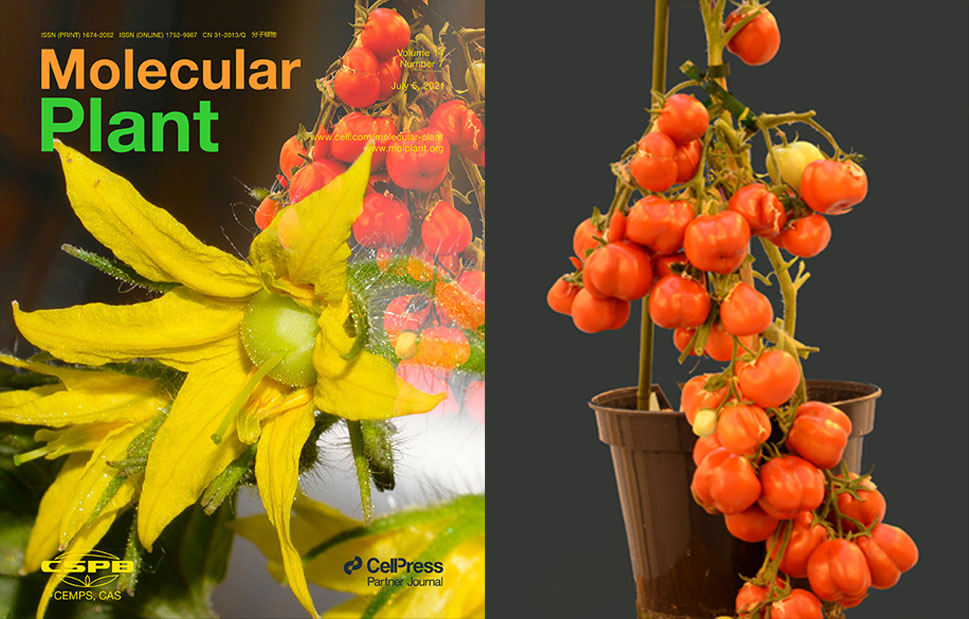The miR166-SlHB15A regulatory module controls ovule development and parthenocarpic fruit set under adverse temperatures in tomato
At anthesis, flower growth is held by a developmental barrier until fertilization takes place enabling, most frequently, the ovary to develop into a fruit. This developmental program relies on a complex regulatory network, involving auxin, gibberellins and ethylene, among others. Fruit set, in tomato and a number of species, is very sensitive to temperature, with consequences on yields. FLOCAD teamis interested in the genetics of carpel development, with both basic and applied research objectives related to facing climate change.
FLOCAD team isolated a mutant via a large-scale genetic screening, which produces tomato fruit under non-permissive heat temperatures and identified the causal mutation in SlHB15A gene encoding a class-III HD-Zip transcription factor . An allelic series including more than 70 variants was isolated in this gene, by TILLING, CRIPSR and using “natural” collections. SlHB15A loss-of-function mutants display an aberrant ovule development that mimics transcriptional changes occurring in fertilized ovules, and leads to a parthenocarpic fruit set under optimal and non-permissive temperatures, both in field and greenhouse conditions. Under cold growing conditions, SlHB15A is subjected to a conditional haplo-insufficiency and recessive dosage sensitivity that is controlled by the miR166 micro-RNA, which appears, to our knowledge, as the first report of a conditional gene dose effect controlled by a micro RNA. Knockdown of SlHB15A alleles by the miR166 leads to a continuum of aberrant ovules correlating with the production of a parthenocarpic fruit set. Consistent with this, plants harboring a Slhb15a–miR166-resistant allele developed normal ovules and were non-parthenocarpic under cold conditions. DAPseq and RNAseq analyses revealed that SlHB15A is a bifunctional transcription factor expressed in the ovule integument. SlHB15A binds to the promoters of auxin-related genes to repress auxin signaling and to the promoters of ethylene-related genes to activate their expression. Taken together, these findings demonstrate the role of SlHB15A as a sentinel to prevent fruit set in the absence of fertilization and to provide a mean to enhance fruiting under extreme temperatures.
Clepet C, Devani RS, Boumlik R, Hao Y, Morin H, Marcel F, Verdenaud M, Mania B, Brisou G, Citerne S, Mouille G, Lepeltier JC, Koussevitzky S, Boualem A, Bendahmane A. The miR166-SlHB15A regulatory module controls ovule development and parthenocarpic fruit set under adverse temperatures in tomato. Mol Plant. 2021 Jul 5;14(7):1185-1198. doi: 10.1016/j.molp.2021.05.005. Epub 2021 May 5. PMID: 33964458.

16/09/2021
